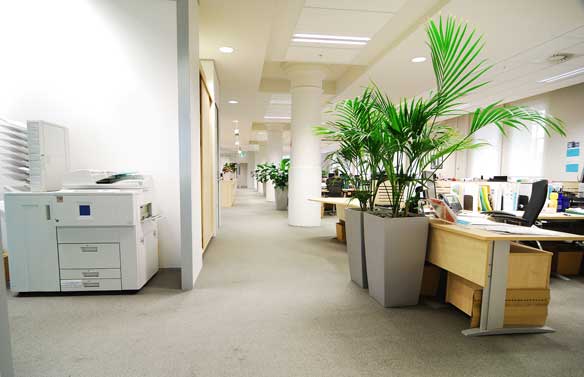Those providing commercial office cleaning services in large facilities need to be aware of the importance of implementing an effective pest management strategy. Not only does the size of many commercial buildings and the amount of traffic they receive on a daily basis make pest introduction and infestation more likely, some commercial facilities are visited by especially vulnerable people (children, the elderly, the chronically ill) for whom pests may pose a real risk.
Those responsible for delivering commercial office cleaning services such as Bristol’s team found when you visit https://www.choicecleaning.co.uk/ have a duty to keep the above-mentioned individuals safe, and as such, pest control in commercial facilities can never be treated as a casual or haphazard pursuit; it must be a concerted, well-organised effort that involves not only custodial staff but also professional pest control specialists.
Custodial staff are often the first to notice the signs of a pest infestation in a building as they work after hours, when many pests are more active and when the facility is quieter. This makes cleaning service providers an ideal first line of defense against pest infestation as they are apt to realise there is a problem long before it becomes evident to the employees working in a given facility. As such, educating yourself and your employees about the signs of pests, dangers of pests, and the conditions that attract pests allows you to offer a great deal of value to your clients when performing commercial office cleaning services.

One of the first things you and your staff should consider is how to create and maintain an Integrated Pest Management (IPM) strategy, a streamlined process which is designed to regulate pest control efforts efficiently and effectively. When creating an IPM, custodial staff will generally interface with trained pest management professionals in order to devise the best way to inspect the facility for pests, identify pests, and implement control methods. Control methods often include not only the treatment of active infestations, but also strategies to prevent future infestations, such as sealing cracks, removing the pests’ sources of food and water, and utilising control products where necessary.
In order to create the best IPM possible, you should be sure to carefully select the pest control company you work with (and you should likewise instruct your staff on what to expect from a pest control company). Choose a pest management company by using the same process your clients use to select a professional cleaning service:
Ask Other Cleaning Service Providers (and Similar Businesses) for Recommendations
Select a company which has a professional-looking, informative, and well-maintained website. The quality of a company’s website often says a lot about how experienced they are.
Check for Online Reviews before Committing
Arrange a meeting with those companies who look promising before selecting any one company. Ask if the companies are familiar with IPM, and then verify which methods they use to not only control pests, but also to implement a preventative pest program.
Consider the bids of several different pest management firms in order to get the best price on pest control services. (But remember to hire based on value offered, not by solely looking for the lowest price point possible; poor pest management service will reflect badly on your ability to offer professional commercial office cleaning services.)
Look for what kind of guarantees the company offers, what they cover, and how long they last. Review the conditions of the contract in order to rule out any loopholes which may void these guarantees.
Always Verify References by Phone
Once you have found a pest management company that fits your needs, you should sit down with them and develop an employee training program which will verse your staff in the basics of pest prevention and control. In general, this plan should include the following strategies:
Food management. Employees should be taught how to keep food sealed and stored in such a way that food items are not accessible to pests. Staff should also be educated on how to effectively clean high-volume areas in commercial facilities where food is present, e.g. cafeterias and kitchens.
Trash disposal. Employees need to know how often to dispose of trash and how to keep it sealed so that pests cannot access it and use it as a food source (e.g. keeping dumpster lids tightly closed and double-checking the areas around them for trash).
Moisture control. Pests (and mould) tend to like damp areas, hence staff need to know how to keep storage areas dry and properly ventilated.
Entry control. Assert the value of not keeping outside doors propped open, of sealing exterior cracks and holes, and of keeping the areas around entry points (such as for pipes) tightly sealed as well. Also instruct staff to check for signs of decaying wood.
Clutter control. Clutter provides the ideal place for pests to hide, and as such, it must be kept to a minimum.
Through employing the above strategies, you and your staff can succeed in keeping pests at bay, ensuring the health and well-being of all those who enter your client’s facilities.
